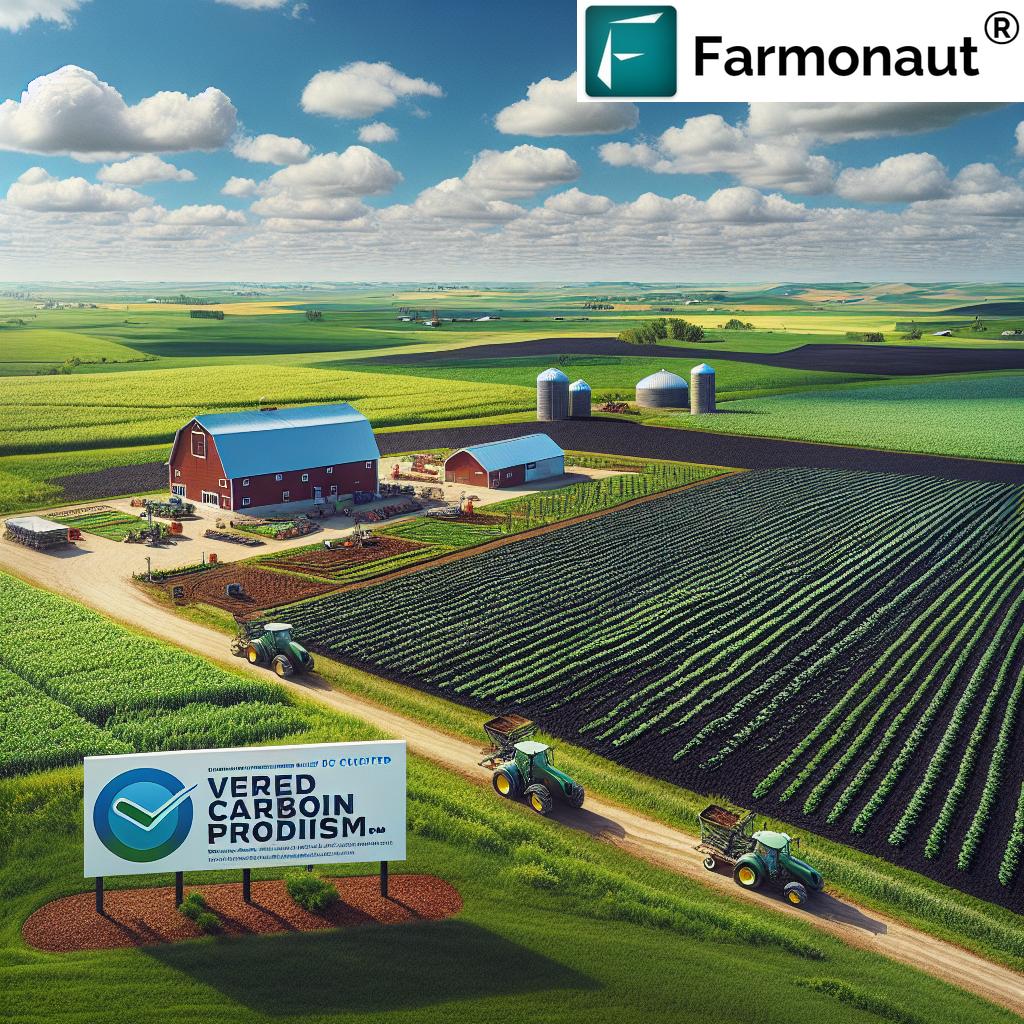Nebraska Farm Life: 7 Powerful Ways Small Acres Thrive
“Over 90% of Nebraska’s farms are family-owned, with small acreages driving new sustainable trends statewide.”
Introduction to Nebraska Farm Life on Small Acres
Welcome to the heartland, where the legendary Nebraska farm life thrives beyond the sweeping fields of corn and soybeans. In the towns surrounding Kenesaw, Adams County, and Bladen, a growing wave of small acreage farming proves that a few acres can spark major agricultural innovation.
Today, we’re uncovering the transformative power of micro-farms and sustainable practices—where you’ll find everything from soil health experiments with buried cotton underwear, to inventive ways of keeping chickens, ducks, and even alpacas. More farmers are connecting their backyards to global audiences with engaging agriculture education on social media, sharing modern solutions for age-old challenges.
If you’re exploring how to grow produce and flowers on a few acres or want urban homesteading ideas—or just love seeing how ag innovation thrives in Nebraska—this in-depth guide is for you!
Nebraska farm life isn’t just about tradition; it’s a space for bold experiments and bridging the gap between food, community, and global trends. Let’s discover how small farms in places like Kenesaw are not only surviving, but thriving—shaping the state’s agricultural future, one creative crop at a time.
The Rise of Modern Small Acreage Farming in Nebraska
It’s an exciting era for agriculture in Nebraska. More landowners are realizing that you don’t need hundreds—or even dozens—of acres to make a real impact. Over recent decades, the number of small, family-run farms in Nebraska has surged, with a growing focus on diverse, high-value produce, flowers, and specialty herbs rather than the traditional commodity crops.
- Innovative Farmers: New-generation farmers, like those near Kenesaw, are harnessing technology, social media, and inventive experiments (such as soil health experiments with cotton) to advance small acreage farming.
- Flexible Land Use: Even with just 1–5 acres, it’s possible to cultivate orchards, vineyards, greenhouses, and raise livestock.
- Community & Sustainability: Small acreages serve as bridges, connecting urban curiosity to agricultural roots, fostering community and setting sustainable trends across Nebraska’s counties.
This evolution is fueled by education, innovation, and a desire to restore not just the land, but also public perception of what farming in Nebraska looks like. Let’s dig deeper into exactly how small Nebraska farms are redefining the state’s agriculture!
Small Acreage Success Strategies Comparison Table
Which methods are transforming Nebraska’s small farms? Here’s a side-by-side comparison of the practices helping small acreages flourish—revealing their practical impact on soil, savings, and sustainability.
| Strategy | Estimated Soil Health Improvement (%) |
Input Cost Savings ($/acre) |
Key Sustainability Benefit | Adoption Trend (Nebraska) |
|---|---|---|---|---|
| 1. Intensive Cover Cropping | 20–28% | $55–$125 | Reduces erosion & increases organic matter | High |
| 2. Rotational Grazing with Backyard Livestock | 14–22% | $90–$175 | Boosts pasture health, reduces weed pressure | Medium |
| 3. No-Till & Minimum Disturbance | 18–25% | $45–$100 | Improves water retention, reduces compaction | High |
| 4. Diversified High-Value Crops (Produce, Flowers, Herbs) | 15–20% | $120–$300 | Maximizes market flexibility and revenue | High |
| 5. Integrated Poultry (Chickens, Ducks) Management | 10–18% | $70–$150 | Provides manure/compost, pest management | Medium |
| 6. Microbiology-Focused Soil Health Experiments | 25–30% | $60–$145 | Enhances nutrient cycling and crop resilience | Increasing |
| 7. Smart Water Conservation Systems | 8–15% | $100–$220 | Saves water, reduces energy use | Medium |
7 Powerful Ways Nebraska Farm Life Thrives on Small Acres
Let’s explore each strategy in detail, focusing on how Nebraska’s small acreage farming revolutionizes traditional agriculture and makes the most of every square foot.
1. Soil Health Experiment: Unlocking Microbiology in Nebraska Soil
Did you know? Many Nebraska farmers are revealing the secrets beneath their boots by transforming soil health experiments into viral content on Instagram and TikTok!
On a small acreage outside Kenesaw, Noah Young buries cotton underwear around his farm. What’s behind this quirky test? It’s all about microbiology in soil. As microbes decompose the cotton fibers, the resulting holes signal healthy, living soil. The holier the underwear, the greater the microbiology—and the more abundant the crops and produce that can be grown.
- Soil Health Benefits: Healthy soil teeming with microbes increases nutrient availability, water retention, and overall plant resilience, especially vital for small-acre farms.
- Expanding Knowledge: Such playful soil health experiments go viral on social media, educating a wide community—not just farmers—on the importance of living soils.
It’s no exaggeration: Soil health experiments have boosted crop yields by up to 30% in recent years on Nebraska’s small farms.
“Soil health experiments on Nebraska’s small farms have boosted crop yields by up to 30% in recent years.”
2. Sustainable Farming Practices: Cover Cropping, Rotational Grazing, and No-Till
Sustainable farming practices aren’t just industry buzzwords—they’re foundational to life on Nebraska’s small acre farms. From Kenesaw down to Bladen, farmers increase biodiversity, enrich the soil, and maximize every inch by stacking smart strategies:
- Cover Cropping: Planting off-season crops like clover, rye, or radishes keeps living roots in the ground all year. This boosts organic matter and supports a thriving microbial ecosystem, directly enhancing microbiology in soil.
- Rotational Grazing: By moving chickens, ducks, and even sheep in systematic cycles, farms in Adams County can improve forage growth, reduce disease, and naturally fertilize acres with manure.
- No-Till & Reduced Tillage: Less soil disturbance helps conserve moisture, reduce run-off, and build stable carbon-rich soils integral for long-term productivity—especially on small plots.
For those inspired by Nebraska’s movement toward eco-friendly farming, the Farmonaut Carbon Footprinting tool lets farms of all sizes (small or large) track and actively reduce their environmental impact with satellite data. The outcome? Meaningful sustainability, from the ground up!
3. Urban Homesteading Ideas: Grow Produce, Flowers & Herbs Year-Round
Gone are the days when urban and rural life stayed separate. The urban homesteading movement is thriving across Nebraska, especially on the edge of hubs like Kenesaw. On as little as one acre, you can:
- Grow diverse produce: From lettuce and tomatoes in spring, to pumpkins and squash in autumn, rotating crops supports better soil and pest control.
- Plant flowers and herbs: Zinnias, lavender, and sunflowers not only beautify your garden but attract pollinators and yield marketable bouquets or value-added products.
- Smart Greenhouses & Hoophouses: Offering harvests deep into Nebraska’s winter, small greenhouses enable families to enjoy fresh produce and extend growing seasons.
If you’re managing operations, tracking resources, or running commercial sales, Farmonaut’s Fleet Management solutions provide farm logistics monitoring—perfect for Nebraska’s mixed-crop and diversified small acreage farms.
4. The Ag Influencer Impact: Agriculture Education on Social Media
The digital age has completely transformed how we share and learn about agriculture in Nebraska. With over 1.1 million followers on TikTok and hundreds of thousands on Instagram, local ag educators are bridging the gap between farming and the modern consumer.
- Myth-Busting: Entertaining videos educate on everything from why chocolate milk doesn’t come from brown cows, to how microbes decompose cotton in a soil experiment.
- Broad Reach: Most audience members aren’t farmers, but aspiring urban gardeners or curious city dwellers, eager to learn and support sustainable local agriculture.
- Next-Gen Inspiration: As the perception of farm life shifts, more people are inspired to try their hand at backyard chickens, raised beds, and edible landscaping!
For those interested in food transparency and origin, Farmonaut’s Traceability platform creates secure blockchains for produce—ensuring your greens grown in Kenesaw are credibly traced from seed to table!
5. Backyard Chickens and Livestock: Egg-cellent Opportunities
Backyard chickens, ducks, turkeys, and even alpacas have become a staple on Nebraska’s small acre farms. Why is backyard livestock so beneficial?
- Manure & Compost: Poultry and livestock are natural fertilizer factories, supplying rich compost that boosts soil health experiments.
- Pest Management: Free-ranging flocks help control pests and weeds without chemicals—ideal for sustainable farming practices.
- Diversified Income: Eggs, feathers, and even wool open up new markets for small farm families.
Thanks to Nebraska’s open-minded local ordinances, more community members can now keep backyard chickens and livestock, further strengthening the bridge between urban and rural living. It’s also a fun and educational way of farming with kids!
6. Farming with Kids: Cultivating Skills & Stewardship
In Kenesaw, generations gather to plant seeds, tend gardens, and raise baby chicks. Farming with kids isn’t just about future inheritance—it’s about teaching resilience, responsibility, and connection to nature. Here’s why it matters:
- Hands-On Lessons: Children learn biology, math, and problem-solving by managing crops, counting eggs, or tracking the growth of herbs in the greenhouse.
- Building Legacy: Stewardship starts early. Kids on small Nebraska farms often inherit the confidence, knowledge, and skills to run a successful, sustainable operation one day.
- Community Bonds: These family-run operations are the backbone of Adams County, preserving the wisdom—and wonder—of Nebraska farm life for the next generation.
Just as important, farmers are using digital platforms to encourage other families to try farming with kids, showing the rewards (and realities) through creative social media content.
7. Crop Diversification & Season Extension: Maximizing Every Nebraska Acre
Small acreage success relies on smart crop planning and season extension. By intensifying plantings and diversifying crops (such as specialty vegetables, culinary herbs, and fresh-cut flowers), small farm operators profit from:
- Market Resilience: If weather, pests, or prices impact one product, another can fill the gap.
- Continuous Cash Flow: Season extension with row covers, high tunnels, and greenhouses means there’s always something fresh to harvest or sell.
- Healthy Soil: Interplanting and rotation break up pest cycles, enrich the microbiology, and keep farm life vibrant through all Nebraska’s seasons.
Did you know? Farmonaut’s Crop Plantation & Advisory solutions can help you plan and manage each bed, row, and hoop house with real-time data. Get expert crop guidance and stay on top of your farm’s evolving needs.
How Farmonaut Empowers Precision Agriculture (For All Acres)
We at Farmonaut believe every acre—big or small—matters in the future of global agriculture. Our mission is to bridge the gap between advanced technology and daily farm life for all farmers, from Kenesaw to anywhere in the world. With Farmonaut’s real-time farm management platform (available via App, Web, and API), we offer affordable tools built on:
- Satellite-Based Crop Health Monitoring: Get instant access to NDVI maps, soil moisture data, and vegetation indices. Make in-season irrigation and fertilizer decisions with confidence—even on the smallest acreages.
- AI Advisory (Jeevn): Receive customized farm tips, weather warnings, and management recommendations—powered by AI and tailored to your crops and region.
- Blockchain Traceability: Track every step of your crop or product, ensuring consumers know where their Nebraska beans, corn, herbs or cotton originated.
- Resource & Fleet Management: Whether you’re operating a greenhouse or a multi-crop micro-farm, get an overview of equipment, labor, and resource use from any device.
Want to empower your Nebraska farm life with satellite insights? Explore Farmonaut’s API for automated crop health, weather, and sustainability data (see full API documentation here).
Check out our easy subscription options for every scale of farming:
FAQ: Nebraska Farm Life & Small Acreage Farming
-
Q: Can you really make a living on just 1-5 acres in Nebraska?
Absolutely! While it takes planning, Nebraska’s small farms thrive with high-value crops, direct marketing, value-added products, and sustainable livestock systems. -
Q: How do soil health experiments help on a small farm?
Simple tests like burying cotton underwear reveal how active your microbial life is—a proxy for nutrient cycling, structure, and crop yield potential. -
Q: Are backyard chickens allowed in Nebraska’s urban areas?
Many Nebraska cities and towns have updated ordinances allowing small poultry flocks—always check with your local government. -
Q: What are the top crops to start with on a small Nebraska farm?
Often, salad greens, tomatoes, peppers, cut flowers, and culinary herbs do well. Diversify for best results! -
Q: Where can small farms access advanced technology affordably?
Farmonaut provides satellite-based crop monitoring, AI farm advisory, traceability, and logistics tools for farms of any scale—get started via
App or API.
Conclusion: A Thriving Future for Small Nebraska Acres
As we’ve explored, Nebraska farm life is evolving away from stereotypes and into an era of creativity, sustainability, and digital connectivity. Whether you’re in Kenesaw, Adams County, or Bladen—or simply inspired from afar—there’s never been a better time to pursue your own small acreage farming dream.
- Restore your soil and experiment with microbiology in soil.
- Grow produce and flowers that nourish your family and community.
- Share your journey on Instagram, TikTok, and beyond!
- Use smart tools like Farmonaut’s platform to bridge tradition with technology—making every acre count.
The future of Nebraska farming is small, smart, and sustainable. Let’s make every acre a story worth sharing. ??















